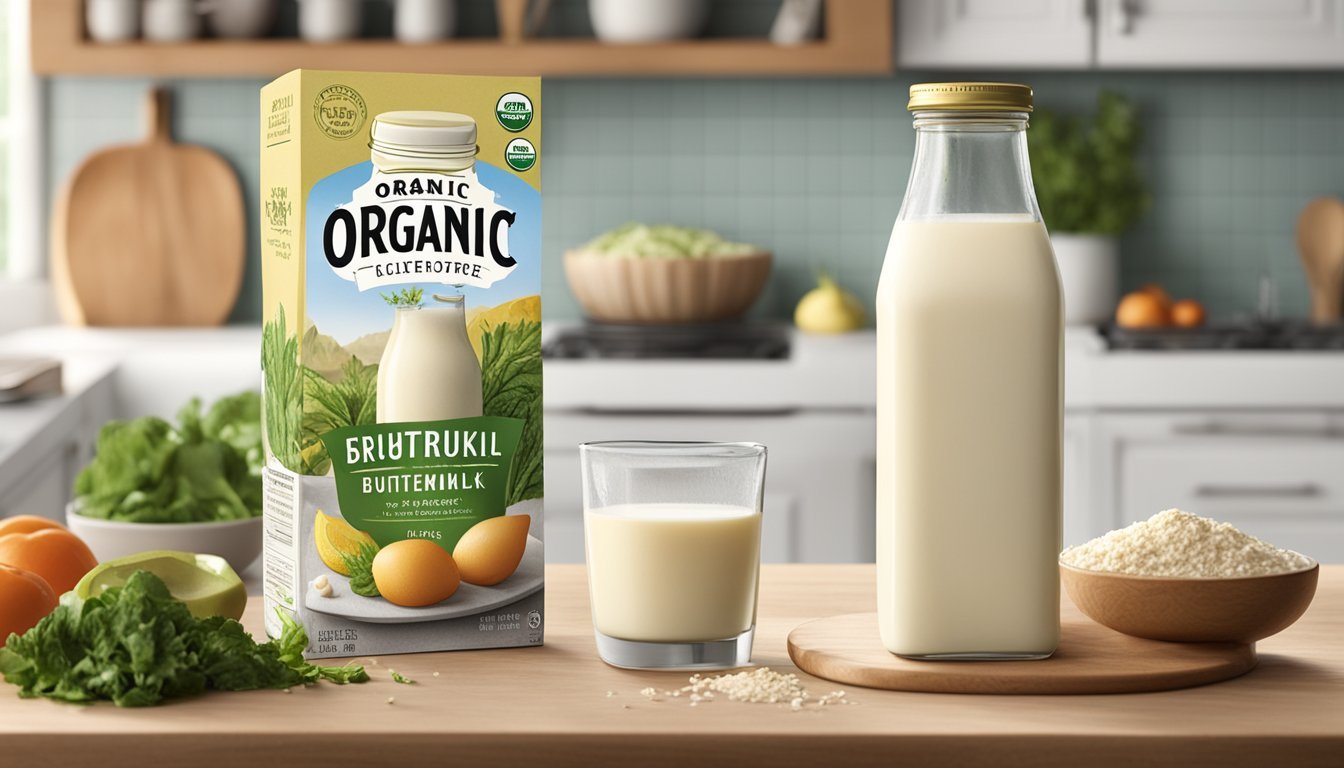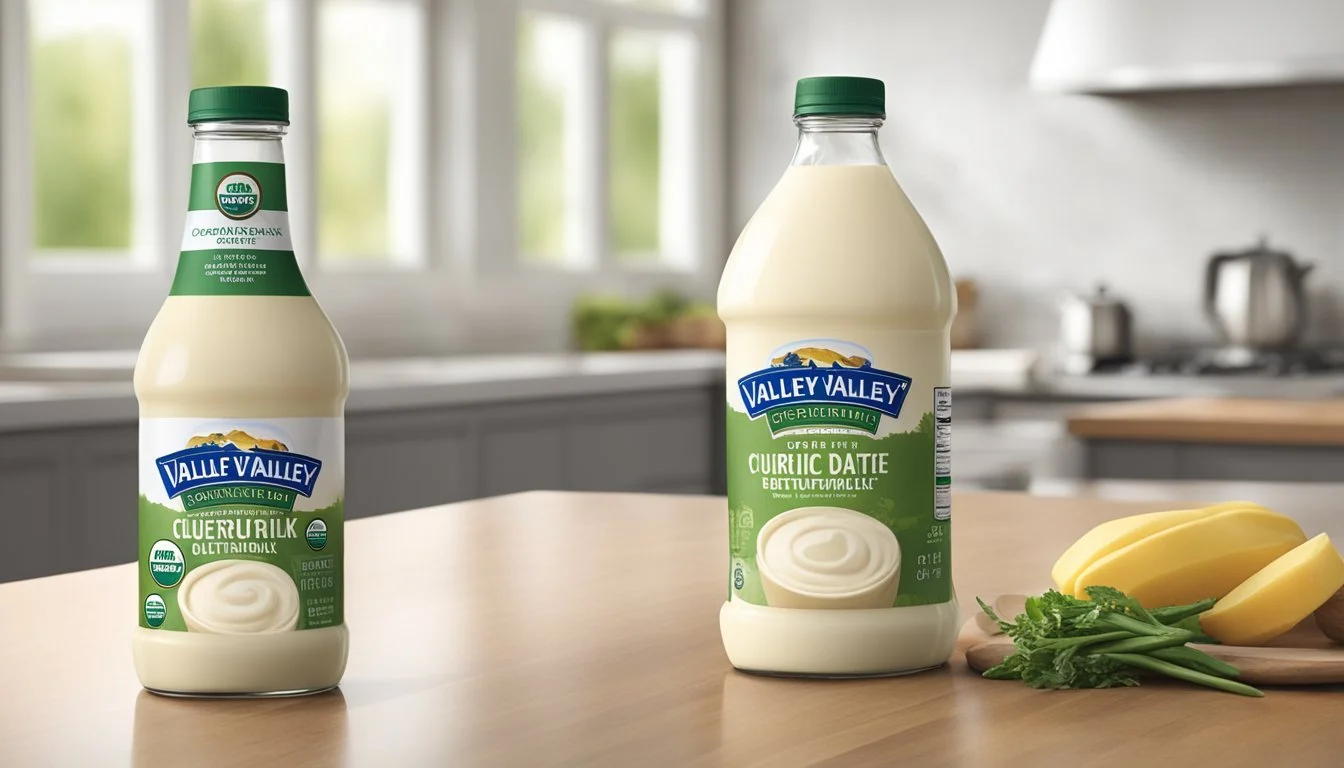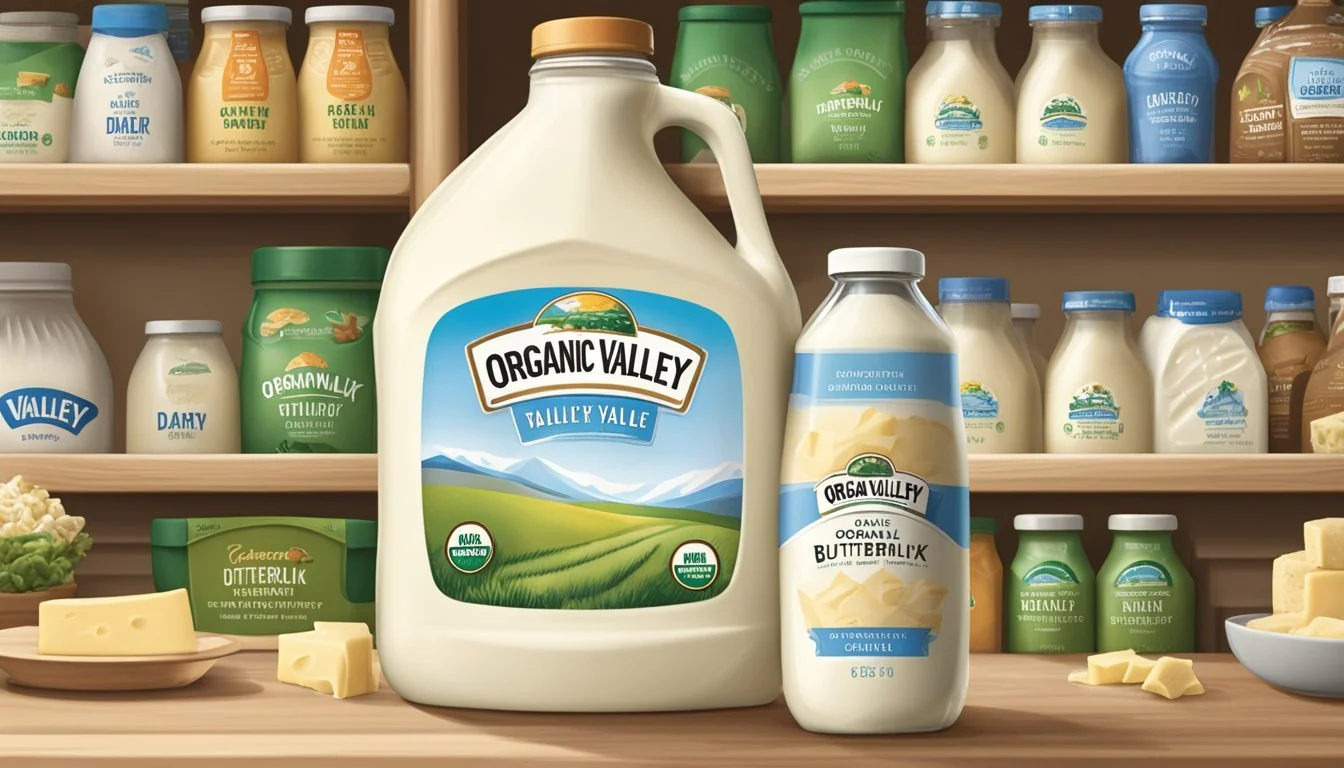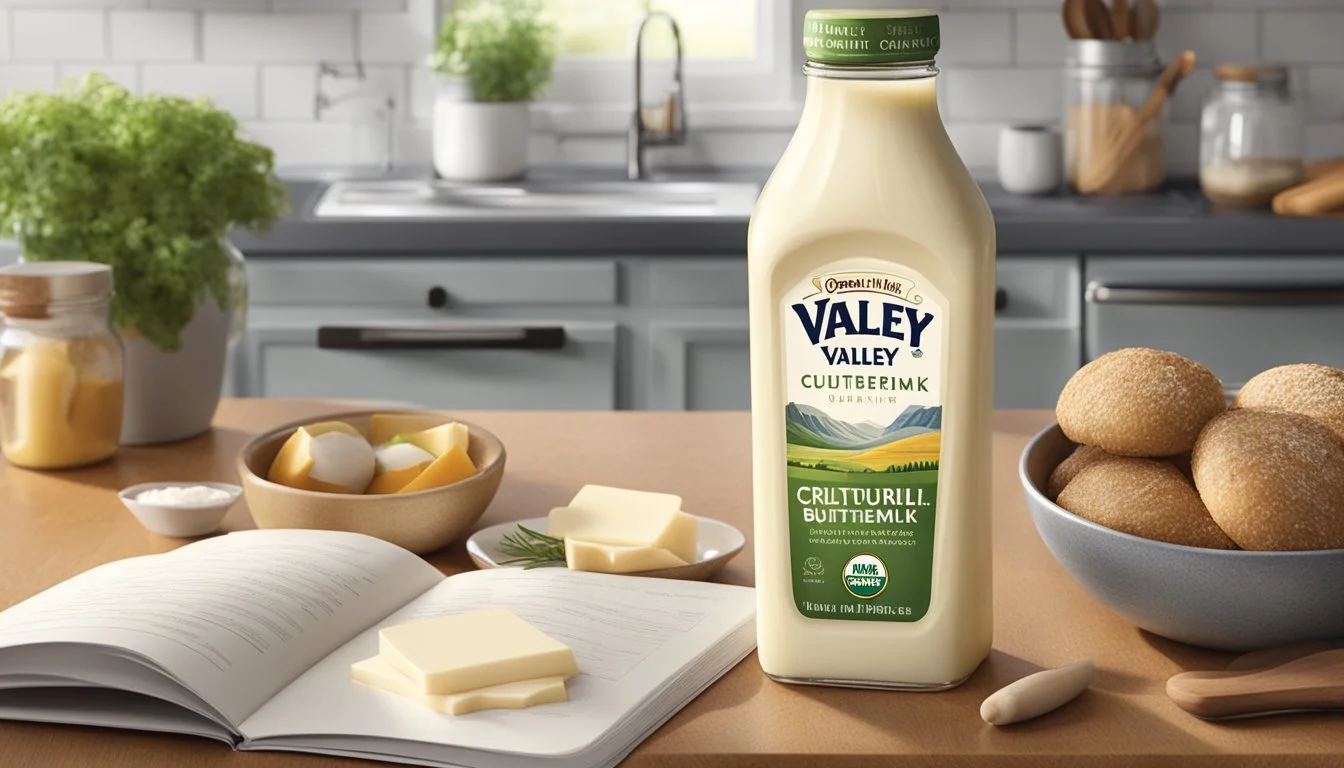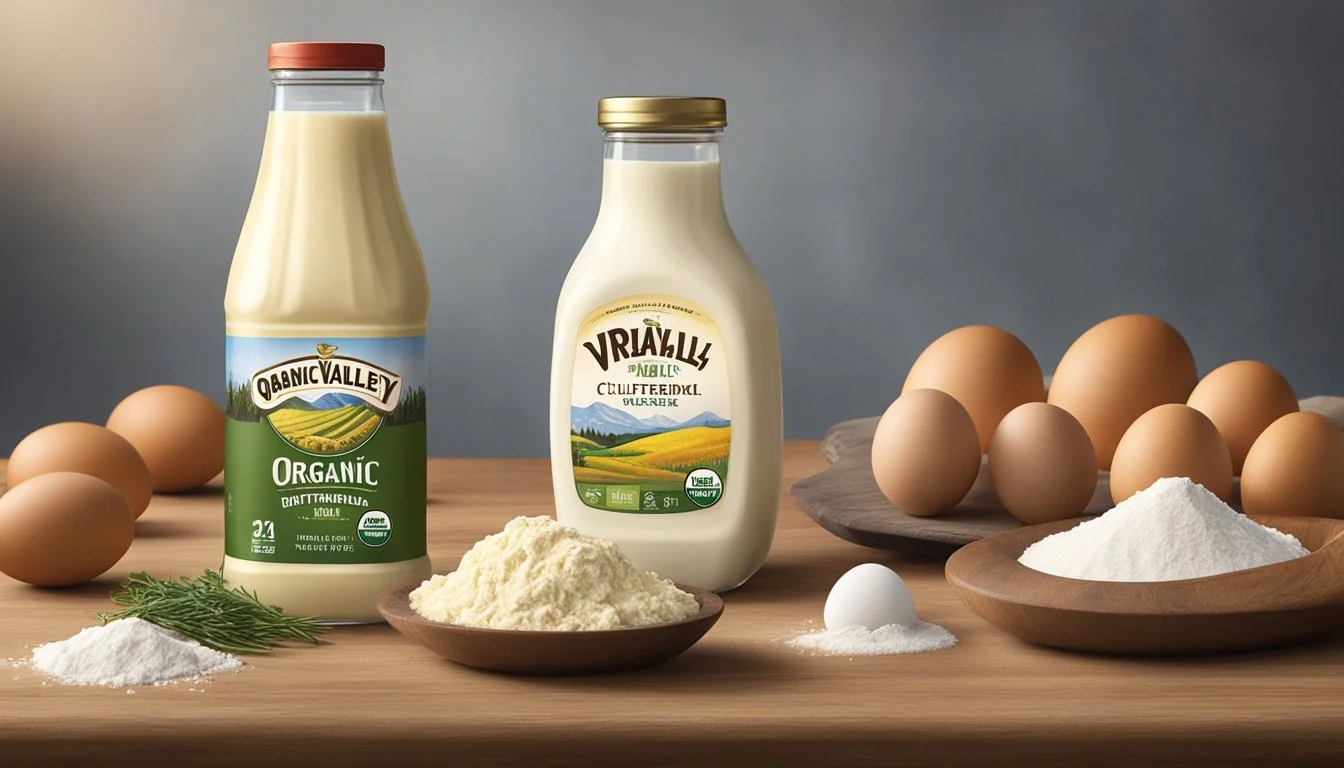How Long Does Organic Valley Cultured Buttermilk Last?
Unveiling Shelf Life Tips
Organic Valley Cultured Buttermilk is a dairy product prized by bakers and chefs for its ability to add subtle richness to recipes. Unlike regular milk, cultured buttermilk contains lactic acid-producing cultures that make it more resilient to spoilage. Due to its acidic nature, Organic Valley Cultured Buttermilk can last longer in the fridge than fresh milk or cream. This extended shelf life is a benefit for those who do not use buttermilk daily, as it allows for its use in numerous recipes over a period of time without the worry of rapid spoilage.
Determining the exact shelf life of Organic Valley Cultured Buttermilk can be slightly complex due to variables such as storage conditions and handling. Generally, once opened, buttermilk remains fresh for a significant duration when kept refrigerated. While buttermilk naturally has a sour scent and taste due to the cultures, a marked change in smell or texture suggests that the buttermilk is no longer suitable for consumption. Consumers are advised to trust their senses; a pungent odor or an excessively thick and curdled appearance are clear indicators that the buttermilk has gone beyond its prime.
Understanding Cultured Buttermilk
Cultured buttermilk has evolved from its traditional origins, becoming a product rich in nutrients with a distinct flavor due to the fermentation process. It serves not only as a beverage but also as a versatile ingredient in the culinary world.
Origins and Definition
Cultured buttermilk originates from a process of fermenting dairy milk. Traditional buttermilk, in contrast, is a byproduct of making butter from cream. Cultured buttermilk today, however, is specifically created by introducing live bacterial cultures into milk, leading to a controlled fermentation.
Production Process
To produce cultured buttermilk, milk is inoculated with bacterial cultures that ferment lactose, the sugar found in milk, converting it into lactic acid. This fermentation process thickens the milk and gives it a tangy flavor characteristic of real cultured buttermilk. Unlike traditional buttermilk, which is thinner, cultured buttermilk is creamier due to its increased viscosity.
Nutritional Profile
Cultured buttermilk is prized for its nutritional content. A typical serving contains:
Calories: Low to moderate
Protein: Good source, contributing to muscle repair and growth
Calcium: Essential for bone health
Vitamin A: Important for vision and immune function
Potassium: Aids in blood pressure control
Sodium: Varies by brand, important for electrolyte balance
Saturated Fat: Present, though less than in whole milk
Cholesterol: Lower than in whole milk
Carbohydrates: Primarily from lactose, reduced through fermentation
Iron: Trace amounts
The fermentation also makes it a more digestible product for those who may be lactose intolerant, as some of the lactose is broken down into lactic acid.
Shelf Life and Storage
Organic Valley Cultured Buttermilk exhibits a remarkable stability due to its cultured nature, yet proper storage is key to maintaining its freshness and safety.
Expiration Date and Freshness
The typical shelf life of Organic Valley Cultured Buttermilk is about two weeks past the printed expiration date when stored correctly. For optimal freshness, it's important that the buttermilk is refrigerated promptly after each use.
Storage Conditions
Refrigeration is crucial for maintaining the quality of Organic Valley Cultured Buttermilk. The product should be stored at a temperature below 40°F (4.4°C), which is considered the 'danger zone' for bacterial growth in perishable food items. Freezing the buttermilk is not recommended as it can alter the texture and taste of the product.
Signs of Spoilage
While buttermilk has a naturally sour smell and taste, signs of spoilage include a strong odor, discoloration, or the presence of mold. If any of these are noticed, or if the product has been stored improperly, it should not be consumed for health and hygiene considerations.
Culinary Uses and Recipes
Organic Valley Cultured Buttermilk is a versatile ingredient cherished by chefs and bakers for its ability to add a rich, tangy flavor to a variety of dishes, ranging from baked goods to marinades. It interacts with other ingredients to enhance texture and taste.
Baking Essentials
When it comes to baking, buttermilk works exceptionally well in recipes that require a moist crumb and tender texture. It's often used in conjunction with baking soda, which reacts with the acidity of buttermilk to produce carbon dioxide, thereby helping doughs and batters to rise.
Pancakes and Waffles: For fluffy, light pancakes or waffles, substitute water or milk with buttermilk to achieve a tangy taste and tender texture.
Buttermilk Biscuits: Buttermilk biscuits are a quintessential recipe where buttermilk enhances flavor while contributing to the signature flakiness.
The consistency of buttermilk also helps to thicken batters, providing the ideal texture for a range of baked goods.
Cooking Applications
Buttermilk isn't just for baking; its culinary applications extend into cooking, where its creamy, acidic properties can transform the character of a dish.
Marinades: Chefs use buttermilk to tenderize proteins. Its acidity breaks down the meat fibers, infusing the meat with moisture and flavor.
Sauces and Dips: The tangy profile of buttermilk can balance the richness of sauces and dips, often pairing with salt and herbs for a fresh taste.
By incorporating buttermilk into recipes, cooks can achieve a balance of flavors and a desirable creamy consistency in savory dishes.
Creative Food Pairings
Exploring creative food pairings with buttermilk can elevate the ordinary to the extraordinary, offering new dimensions of flavor and texture.
Cheese: Buttermilk works well in homemade cheese recipes, where its tanginess complements the creamy notes of fresh cheese.
Dressings: Simple buttermilk dressings enhance salads with a tangy, creamy base that blends seamlessly with a variety of spices and herbs.
By utilizing buttermilk's unique properties, cooks and bakers can experiment and discover novel flavor combinations that delight the palate.
Health and Nutritional Benefits
Organic Valley Cultured Buttermilk is a probiotic-rich fermented food product that offers various health and nutritional benefits. With its wholesome content, it supports digestive health and fits within various diet considerations due to its lower fat content compared to whole milk.
Digestive Health
Cultured buttermilk is a source of probiotics, the beneficial bacteria that contribute to gut health. These living organisms aid in digestion and help maintain a balanced gut microbiome. Since Organic Valley Cultured Buttermilk is a fermented food, it can be easier to digest for those who might be lactose intolerant, making it a valuable inclusion in their diet.
Diet Considerations
From a nutritional standpoint, buttermilk is relatively low in fat, especially when compared to whole milk; Organic Valley offers a 1% low-fat version, making it a suitable option even for low-fat diet plans. Cultured buttermilk generally contains essential nutrients such as:
Protein: Vital for muscle repair and growth
Calcium: Important for bone health
Vitamin B12: Supports nerve function and blood formation
Riboflavin: Aids in energy production
Potassium: Essential for heart and muscle function
The nutrient profile of buttermilk varies depending on whether it's made from skim or whole milk, but it remains a wholesome choice, providing key nutrients in a more digestible form.
Alternative Buttermilk Options
When organic valley cultured buttermilk isn't available, plenty of alternative options provide similar tastes and textures for culinary use. These include homemade varieties that one can prepare with common kitchen ingredients, commercial alternatives available in stores, and buttermilk substitutes that can be used in a pinch.
Homemade Varieties
Making homemade buttermilk is straightforward and typically involves fermenting milk. To make homemade cultured buttermilk, an individual needs only to add a buttermilk culture or a small amount of existing buttermilk to regular milk and let it ferment. For those wondering how to make real buttermilk, the process involves leaving pasteurized milk out for a period until it naturally sours and thickens.
For Homemade Cultured Buttermilk:
Add 1/4 cup buttermilk to a quart jar of pasteurized milk.
Let it sit in a warm place for about 12 to 24 hours until the mixture thickens.
For Real Buttermilk (from making butter):
Agitate cream until the milk solids separate from the liquid, which is traditional buttermilk.
Commercial Alternatives
Supermarkets offer various commercial alternatives to organic cultured buttermilk. These products are usually pasteurized and contain added cultures to ensure a consistent product that's safe for consumption. They are typically sold in liquid form and can be found alongside other milk products in the dairy section. Commercial alternatives may be available in full fat, low fat, or skim milk varieties, all of which provide calcium.
Examples Include:
Powdered buttermilk, which has a long shelf life when refrigerated after opening.
Cultured buttermilk similar to organic varieties, but from different brands.
Buttermilk Substitutes
For those who cannot find buttermilk or require a dairy-free or vegan option, there are several buttermilk substitutes that can replicate its acidity and flavor in recipes, for instance, a homemade buttermilk biscuit. Acidulated milk made with lemon juice or vinegar mixed with milk is a common substitute.
Substitute Recipes:
Lemon/Vinegar Sour Milk: Mix 1 tablespoon of lemon juice or vinegar with enough milk to make 1 cup, let sit for 10 minutes.
Dairy-Free Version: Combine 3/4 cup almond milk yogurt with 1/4 cup non-dairy milk and 1/2 teaspoon of white vinegar, and let sit for 5-10 minutes.
Each of these alternative options to cultured buttermilk may be used in various culinary applications, ranging from baked goods to dressings, and can be tailored to dietary restrictions or availability of ingredients.
Safety and Health Considerations
When discussing the longevity and safe consumption of Organic Valley Cultured Buttermilk, it's crucial to consider the risk of bacterial contamination and the importance of proper handling. These factors directly impact both shelf life and safety.
Bacterial Contamination
Organic Valley Cultured Buttermilk is a fermented dairy product containing beneficial bacterial cultures. These cultures are responsible for the tangy flavor and thick texture. However, foodborne illness can occur if harmful bacteria growth outpaces the good bacteria, especially when buttermilk is stored improperly or kept beyond its shelf life. Hygiene also plays a vital role, as cross-contamination can introduce dangerous bacteria.
Guidelines to help mitigate bacterial contamination:
Hygiene: Always handle buttermilk with clean utensils.
Shelf Life: Follow the product's expiration date and consume within five days after opening.
Strong Odor: A sour smell is natural, but an off or excessively strong odor may indicate spoilage.
Handling and Consumption
The way buttermilk is handled and consumed directly affects its safety.
Key points for proper handling and consumption:
Refrigeration: Store buttermilk at or below 40°F.
Seal Tight: Keep the container sealed to prevent exposure to air.
Post-Opening: Once opened, shaking the container mixes separated whey and solids, which is a typical behavior of buttermilk after a few days.
One should not consume buttermilk if it exhibits signs of spoilage, such as an unusual texture, color, or if the scent has become sharply disagreeable. In such cases, the risk of bacterial contamination and subsequent foodborne illness is higher.

